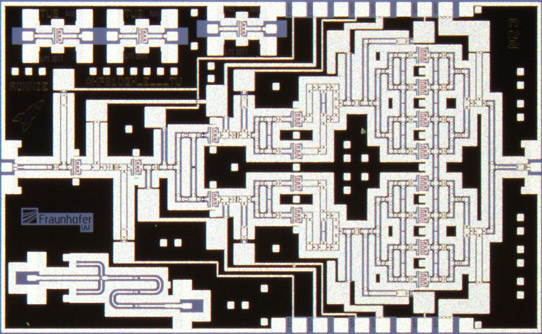- News
18 September 2018
5G GaN2 project developing 28GHz, 38GHz and 80GHz demonstrators for 5G cellular network base stations
© Semiconductor Today Magazine / Juno PublishiPicture: Disco’s DAL7440 KABRA laser saw.
The fifth-generation (5G) cellular network will enable data transmission between humans, devices and machines in real time, but so far no technology exists that allows for a reliable, fast and energy-efficient 5G network. In the European Union (EU) project ‘5G GaN2’, 17 partners from research and industry have joined forces to develop cost-effective and high-performance technologies, based on gallium nitride, for the upcoming mobile communications standard. The consortium, which also includes the Fraunhofer Institute for Applied Solid State Physics (IAF) of Freiburg, Germany, started its work in July.
Besides Fraunhofer IAF, the project consortium partners include the complete value chain of mobile phone technology (wafer suppliers, semiconductor manufacturers and system integrators, together with universities and research institutes).
In the 5G cellular network, cars, devices and production machines will also transmit data in real time via the wireless radio network. In future, these high data rates will be covered by frequency bands in the millimeter-wave range (>24GHz), which provide a ten times higher bandwidth compared with currently available frequency bands (<3GHz) and have now been released internationally to significantly increase the bandwidth range.

Picture: The E-band amplifier chip developed at the Fraunhofer IAF measures only 4mm x 2.5mm.
However, these new frequency ranges cannot be served efficiently with existing mobile and antenna technology. “Therefore, it is necessary to improve the available output power and energy efficiency of the net infrastructure for these innovative frequency bands, through the use of advanced gallium nitride technology,” says Dr Dirk Schwantuschke, who is managing the project on behalf of Fraunhofer IAF. In the ‘5G GaN2’ project, components, parts and circuits for 5G base stations will be developed based on GaN. “The contribution of the Fraunhofer IAF to the overall project will be the development of power amplifiers in E-band, the frequency range around 80GHz,” explains Schwantuschke.
Lowering cost and improving performance
To meet the demand for data transmission via millimeter-wave frequency bands in the future, base-station technologies need to fulfill two criteria: the output power needs to be improved while simultaneously keeping cost and energy consumption low. To achieve these goals, the ‘5G GaN2’ project partners are counting on GaN-based technology and amplifier circuits. GaN-based electronic components and systems are much more energy efficient than conventional silicon-based components. GaN components can optionally be applied on cost-efficient silicon substrates. Another aspect of the project is the combination of various components in a single module, through innovative approaches regarding packaging technologies, in order to reduce costs.
The project’s aim is to realize demonstrators at 28GHz, 38GHz and 80GHz serving as key technologies for the development of a powerful and energy-efficient 5G cellular network based on GaN. The European Commission initiative ECSEL (Electronic Components and Systems for European Leadership) promotes the three-year joint project, consisting out of 17 project partners from seven countries. ECSEL supports development, research and innovation electronics by bringing various partners from industry, research and public sphere together.
Amplifier development Fraunhofer IAF
Fraunhofer IAF has particular expertise in developing GaN-based amplifiers. “GaN-based devices are especially well suited for powerful high-frequency amplifiers that are required for base stations and the infrastructure of the cellular network, as it allows [us] to provide high frequencies at high power,” says Schwantuschke. “The amplifiers developed at the Fraunhofer IAF are capable of sending more data faster and more energy efficiently through the cellular network.”


